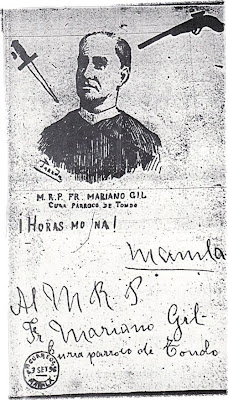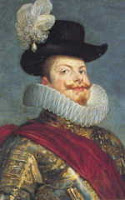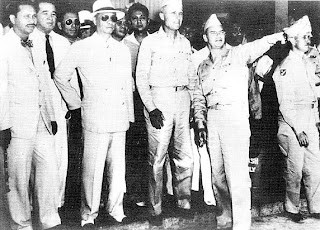 |
| Moments before the execution of the brave, patriotic Katipuneros |
1897 -- Gregorio del Pilar, a lieutenant-colonel in the Philippine revolutionary army fighting colonial Spain, stages a famous assault on the barracks of the Spanish cazadores in the town convent of Paombong, Bulacan; del Pilar's extraordinary combination of wit, courage and muscles in combat will catch the attention of Gen. Emilio Aguinaldo, the leader of the Philippine Revolution who succeeded Supremo Andres Bonifacio that he had earlier ordered executed, and will soon make del Pilar part of Aguinado's circle of revolutionary leaders.
-- The Battle of Aliaga in Nueva Ecija is fought between the Spaniards and Filipino revolutionaries, with colonial Governor-General Primo de Rivera utilizing 8,000 men against the forces under the command of Generals Mamerto Natividad and Tinio; Spanish General Nuñez would be among those seriously wounded in this huge battle of the Philippine Revolution.




























